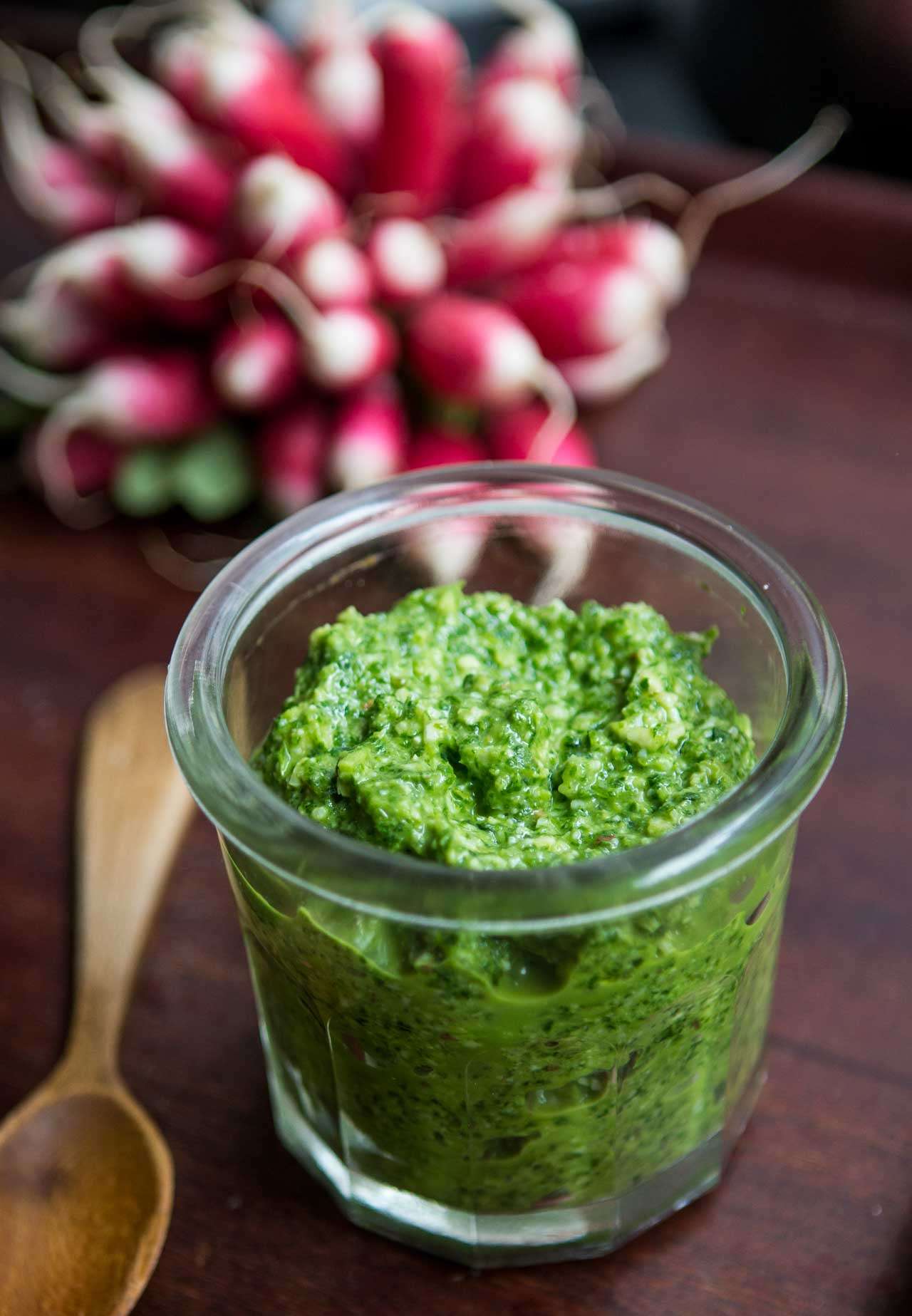
Radish Leaf Pesto
I strongly recommend using radish leaves that are organic or unsprayed. Radish leaves can harbor a lot of grit so you may need to wash them in several changes of water, until no grit remains, as I do.
If you like garlic, use 3 cloves of garlic rather than 2. If you don't have a food processor you can also make this in a blender. You'll need to stop the blender a few times to scrape down the sides. However you make it, be careful not to over-puree it; I like it best when it's a little chunky and a blender can easily make it too smooth.
This recipe makes enough to sauce 3-4 portions of pasta. You can easily double the recipe if you have a lot of radish leaves on hand and freeze leftovers. In addition to a sauce for pasta, it can be used a spread on crackers toasted for an appetizer, as part of a sandwich, spread with goat cheese, avocado, or roasted vegetables, or a dip for raw vegetables, such as carrots, fennel, celery, kohlrabi, and beets.
Ingredients
- 8 cups (140g) loosely packed radish leaves preferably organic (well-washed)
- 2-3 medium cloves of garlic peeled and sliced
- 1/4 cup (60ml) extra-virgin olive oil plus 1-2 tablespoons, or more, if necessary
- 1/2 cup (45g) grated Parmesan cheese
- 1/3 cup (30g) whole almonds, unroasted, coarsely chopped or 3 tablespoons untoasted pine nuts (30g)
- 3/4 teaspoon salt
Instructions
- Coarsely chop the radish leaves and put them in the bowl of a food processor along with the garlic, 1/4 cup of olive oil, Parmesan, almonds or pinenuts, and salt.
- Pulse the ingredients in the food processor, stopping to scrape down the sides, if necessary, until the ingredients come together in a cohesive paste. If needed, add 1 or 2 tablespoons or more olive oil, unless it's a smooth, moist paste.
Notes
- Serving tip: If tossing with warm pasta, you may want to add a good pour of olive oil (or a few spoonfuls of the starchy pasta cooking water) after stirring in the pesto if the pasta seems dry. (Radish leaves can soak up a lot of oil.)